Program
The themes of the AMD Symposium will center on: (1) Earthquakes and Natural Seismic Sources; (2) Seismic Tomography; (3) Dynamics and Composition of the Mantle; (4) Seismology of the Earth's Core; (5) Dynamics and Composition of the Earth's Core; and (6) Community Facilities and Resources.Schedule
Posters
Invited Speakers
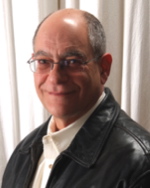 |
Jay Bass President COMPRES R.E. Grim Professor of Geology University of Illinois at Urbana-Champaign |
Professor Bass' research interests are in the areas of mantle petrology and thermal structure, phase transformation in minerals, Earth evolution, experimental measurements of the elastic properties of materials at extreme conditions, and understanding Earth's seismic structure and elastic anisotropy. He is a professor of geophysics and materials sciences at the University of Illinois Urbana-Champaign, and is currently the President of the COnsortium for Materials Properties Research in Earth Sciences (COMPRES). |
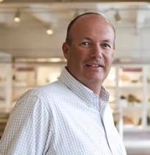 |
Jeremy Bloxham Professor of Geophysics Dean of Science Harvard University |
Geophysicist Jeremy Bloxham, dean of science in Harvard University’s Faculty of Arts and Sciences (FAS), Mallinckrodt Professor of Geophysics, and professor of computational science in Harvard’s School of Engineering and Applied Sciences was first appointed to the Harvard faculty as an assistant professor in 1987. Bloxham was promoted to full professor in 1993 and assumed the Mallinckrodt chair in 2005. In 2002, he was named a Harvard College Professor, a distinction recognizing exceptional undergraduate teaching. Bloxham studies how planets generate magnetic fields, a long-recognized dynamic phenomenon that is still not fully understood despite more than four centuries of scientific investigation. His research group has developed a three-dimensional numerical model that could help explain why the Earth’s magnetic field has weakened by as much as 10 percent over the past 150 years. Other interests include the application of high-performance computing and visualization to problems in geophysics. Bloxham holds a B.A. and an M.A. in mathematics from Cambridge University, awarded in 1982 and 1986, respectively, and a Ph.D. in geophysics awarded by Cambridge University in 1986. He is a fellow of the Royal Society, Royal Astronomical Society, and the American Geophysical Union, and a member of both the American Association for the Advancement of Science and the Society for Industrial and Applied Mathematics. Bloxham, who has served on the editorial boards of the Journal of Geophysical Research and Geophysical Journal International, has received professional honors including a Packard Foundation Fellowship in 1990, the Presidential Young Investigator Award in 1991, the Macelwane Medal of the American Geophysical Union in 1994, and the Chapman Medal of the Royal Astronomical Society in 2001. |
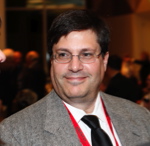 |
James L. Davis Lamont Research Professor Lamont-Doherty Earth Observatory Columbia University |
Dr. Davis's main research interests involve positional and physical geodesy using space-based and satellite techniques. He applies these techniques to studies of the solid Earth, climate, the cryosphere, the atmosphere, and oceans. He also engages in research and development of technology aimed at the improvement of the accuracy of satellite geodetic systems. |
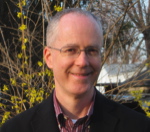 |
Tom Duffy Professor of Geosciences Princeton University |
Dr. Duffy's research focuses on understanding the structure, composition, and evolution of planetary interiors through laboratory experiments at extreme conditions of pressure and temperature. Using diamond anvil cells and other methods for achieving high compression, he studies a range of properties including crystal structures, equations of state, phase transitions, elasticity, and deformation behavior of mantle and core minerals. Recent efforts have focused on the effects of hydrogen on seismic properties of upper mantle minerals, the effects of compositional variation on seismic structure of the core-mantle boundary region, and experimental studies of iron at multimegabar pressures using laser compression techniques. |
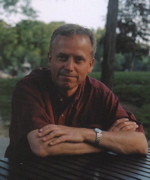 |
Goran Ekstrom Professor of Earth and Environmental Sciences Lamont - Doherty Earth Observatory Columbia University |
Professor Ekstrom's main research interest is global earthquake seismology. This includes the detailed study of individual earthquake ruptures, and the relationship between seismicity and the large scale tectonic deformation of the crust and mantle over geologic time. Prof. Ekström's teaching interests include Environmental Geology, in particular the science and policy aspects of the assessment and mitigation of Geologic Hazards. |
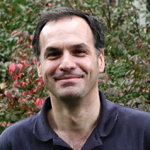 |
Allessandro Forte Professor of Geophysics University of Quebec at Montreal |
The main objective of his research activities is an improved understanding of the spatial and temporal variation of the slow creep or flow of material in Earth's solid interior over geological time. This research also focuses on understanding and modeling the consequences of this mantle flow for a wide variety of processes occurring on the Earth's surface, such as: the tectonic plate motions and the associated 'drift' of continents; large-scale variations in surface topography and associated sea level changes which are recorded in deep sedimentary basins in continental interiors; dynamic stresses in Earth's crust; perturbations in Earth's orbital motions and resulting variations in paleoclimate which are recorded in sedimentary cycles and rhythms. A large part of this work is made possible thanks to the remarkable advances in seismic tomography that have provided detailed 3-D images of the global structure in the mantle that is related to the mantle convection process. |
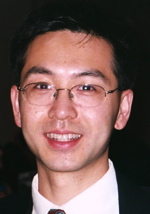 |
Jeff Gu Associate professor of Geophysics University of Alberta Canada |
Dr. Gu’s research focuses on resolving the crust and upper mantle structure, composition and dynamics using seismic waves. He has conducted global and regional analyses, mainly targeting subduction zones and hotspots, based on tomographic inversions and observations of weak, secondary arrivals resulting from Earth’s internal interfaces. His recent research efforts emphasize the improvement of seismic data constraints through high-resolution array methods and broadband data acquisition. Since moving to Alberta (Canada), a region well known for large deposits of oil sands, he has established the first regional, semi-permanent broadband seismic array and expanded his research to studies of microseismicity and applications of seismic methods in bone ultrasound imaging. |
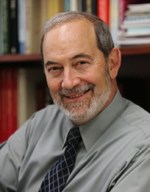 |
Tom Jordan Director Southern California Earthquake Center Keck Professor of Earth Sciences University of Southern California |
Tom Jordan is a geophysicist interested in the composition, dynamics, and evolution of the solid Earth. His research has concerned seismology, plate tectonics, the formation of continents, mantle structure, earthquakes, and fault systems. He received his Ph.D. in geophysics and applied mathematics from Caltech in 1972 and taught at Princeton University, the Scripps Institution of Oceanography, and MIT. He served as the head of MIT's Department of Earth, Atmospheric and Planetary Sciences from1988 to1998. In 2000, he moved to the University of Southern California, where he is the Keck Professor of Earth Sciences and Director of the Southern California Earthquake Center. He received the Macelwane Medal of the American Geophysical Union in 1983, the Woollard Award of the Geological Society of America in 1998, and the National Associate Award of the National Academy of Sciences in 2001. He was elected to the American Academy of Arts and Sciences in 1995, the National Academy of Sciences in 1998, and the American Philosophical Society in 2002. He was appointed as University Professor in 2004. He lives with his wife Margaret in Pasadena, California. |
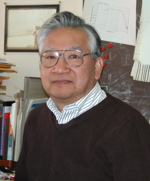 |
Hiroo Kanamori John E. and Hazel S. Smits Professor of Geophysics California Institute of Technology |
Hiroo Kanamori's current research focus is on the study of old seismograms in light of modern seismology. He hopes to expand the seismological database for a better understanding of the physics of earthquakes. |
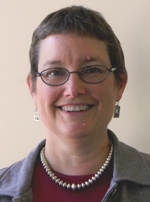 |
Louise Kellogg Professor of Geophysics U.C. Davis |
Louise Kellogg is Professor in the Department of Geology at UC Davis. Her research focuses on understanding the dynamics of the solid Earth, using a combination of computational methods and observation. She has developed models of convection in the Earth's mantle that incorporate chemical geodynamics and seismic observations of the structure of the deep Earth. Her work also includes models of the behavior of faults with the goal of understanding the earthquake cycle. To address the large, complex datasets emerging in the geosciences, she established the W. M. Keck Center for Active Visualization in Earth Sciences (KeckCAVES), which she directs. In 2010, she became the director of the NSF-funded Computational Infrastructure for Geodynamics (CIG). She holds B.S. and M.Eng. degrees in Applied and Engineering Physics, and Ph.D. in Geological Sciences from Cornell University. Professor Kellogg served as Chair of the Geology department for 9 years, is a Fellow of the American Geophysical Union and was awarded the Presidential Faculty Fellowship by George H. W. Bush in 1992. |
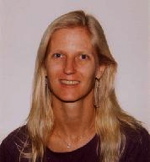 |
Kristine Larson Professor of Aero-space Engineering University of Colorado |
Kristine M. Larson is a professor of aerospace engineering sciences at the University of Colorado in Boulder. Dr. Larson’s research focuses on developing new GPS techniques to address a range of geophysical problems, including measuring global plate tectonics, plate boundary deformation, episodic slip, ice sheet motion, volcanic activity, strong motion, glacial isostatic adjustment, and more recently, soil moisture, vegetation water content, and snow depth. |
 |
Cin Ty Lee Associate Professor of geochemistry Rice University |
Cin-Ty Lee is an Associate Professor of geochemistry in the Department of Earth Sciences at Rice University in Houston, TX. His main research interests are in the origins and evolution of continents, planetary differentiation, redox processes in the mantle, and long-term climate change. |
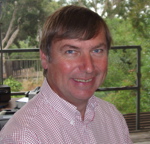 |
Guy Masters Professor Director Institute of Geophysics and Planetary Physics Scripps Institute of Oceanography U.C. San Diego |
Straight after his PhD, Guy Masters became a Green Scholar at IGPP, La Jolla in 1979 and has been there ever since. He is now director. His research has focused on the 1D and 3D structure of the Earth using free oscillations, surface waves, and body waves. He is also interested in interfacing seismology and mineral physics to facilitate quantitative interpretation of seismic observations. |
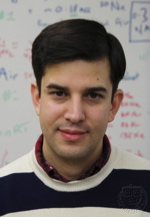 |
Sujoy Mukhopadhyay Associate Professor of Geochemistry Harvard University |
My research is aimed at understanding volatile cycling over Earth history through measurements of carbon and noble gases in mantle derived samples. These measurements help us understand the chemical evolution of the mantle and the formation of the atmosphere. Further, they provide quantitative constraints on mixing between the different reservoirs in the solid Earth, the nature of communication between the mantle and the surface, and the extent of flow between the upper and lower mantle. |
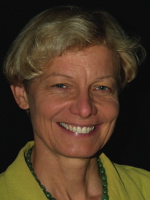 |
Barbara Romanowicz Director Seismological Laboratory Professor of Geophysics U.C. Berkeley |
Barbara Romanowicz was educated in France. In 1991, she moved to the University of California, Berkeley where she holds the position of professor of Geophysics and Director of the Berkeley Seismological Laboratory. Her research interests include deep earth structure and dynamics using seismological tools: elastic and anelastic seismic tomography; waveform modelling of mantle and core phases; wave propagation in complex heterogeneous and anisotropic media; earth’s normal modes and surface waves. Recently, she has also worked on the problem of coupling between the solid earth and the fluid envelopes such as expressed in the earth’s “hum”. She also has an interest in earthquake processes and scaling laws, real time estimation of earthquake parameters, the development of modern broadband seismic and geophysical observatories on land and in the oceans as well as planetary seismology. |
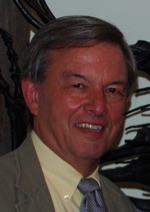 |
David W. Simpson President The IRIS Consortium |
David Simpson has served since 1991 as President of the Incorporated Research Institutions for Seismology (IRIS), a consortium of more than 100 U.S. universities that provides instrumentation and data facilities to support national and international research in seismology. Prior to joining IRIS, Dr. Simpson was Senior Research Scientist and Associate Director at the Lamont-Doherty Earth Observatory of Columbia University where he led research programs to study reservoir triggered earthquakes, regional seismicity and tectonics in Central Asia and Egypt. |
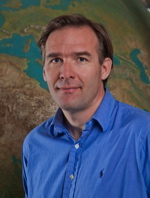 |
Jeroen Tromp Blair Professor of Geology Professor of Applied & Computational Mathematics Princeton University |
Seismologist Jeroen Tromp, Blair Professor of Geology, Professor of Applied & Computational Mathematics, and Director of the Princeton Institute for Computational Science joined the Princeton faculty in 2008. He was on the Harvard faculty from 1992 until 2000, where he went through the ranks as assistant, associate and full professor. He was the Eleanor and John McMillan Professor of Geophysics at the California Institute of Technology, where he was Director of the Seismological Laboratory from 2003 to 2008. Tromp's main research interests are in theoretical & computational seismology, including simulations of acoustic, (an)elastic, and poroelastic seismic wave propagation on local, regional and global scales. The current focus of his research involves imaging Earth's interior based on spectral-element and adjoint methods. Tromp received his B.Sc. in Geophysics from the University of Utrecht in 1988, and holds an M.S. (1990) and Ph.D. (1992) from Princeton, where he worked under the tutelage of the late F.A. Dahlen. He received the Macelwane Medal of the American Geophysical Union in 1999 and a Gordon Bell Award in 2003. He is a corresponding member of the Royal Netherlands Academy of Sciences. |
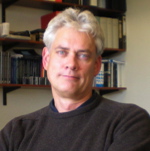 |
Rob van der Hilst Director Earth Resources Laboratory Cecil and Ida Green Professor of Earth Sciences MIT |
Rob van der Hilst studies Earth’s structure, composition, and evolution on a wide range of of scales, from global mantle structure that has evolved over 10-100 million of years, through regions of active tectonics (such as Tibet and SW China), to subsurface hydrocarbon reservoirs and local fault systems where changes in medium properties occur over the course of days or weeks. To understand mantle convection and regional-scale lithospheric deformation he uses seismic tomography to determine smooth spatial variations in medium properties in Earth’s mantle and scattered waves to delineated medium contrasts, for instance the crust-mantle boundary, upper mantle discontinuities, and the core-mantle boundary. With interferometric and noise-correlation methods he studies crustal structure and subtle changes in medium properties during earthquake cycles. Van der Hilst received his Ph.D. in geophysics from Utrecht University in 1990, was research fellow at the University of Leeds and the Australian National University, and joined the faculty of MIT in 1996, where is now the Cecil and Ida Green Professor of Earth Sciences. He has served as Editor for several leading journals, including Journal of Geophysical Research, Geophysical Journal International, and Earth and Planetary Sciences Letters. Since 2004 he has been Director of MIT’s Earth Resources Laboratory. His awards include the Macelwane Medal of the American Geophysical Union (1997), a Packard Fellowship (1998), and the VICI Award for Innovative Research from the Dutch National Science Foundation (2003).
|
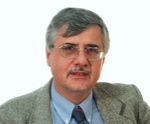 |
John Woodhouse Professor of Geophysics University of Oxford |
John Woodhouse received his PhD in the Department of Applied Mathematics and Theoretical Physics, University of Cambridge. Following postdoctoral work at the University of Cambridge and at University of California, San Diego he was Assistant, Associate and Full Professor at Harvard University in the Department of Earth and Planetary Sciences. Since 1990 he has been Professor of Geophysics at the University of Oxford, Department of Earth Sciences. His research interests are in theoretical and observational seismology and, in particular, in the use of global seismological data to characterize earthquakes and to image the Earth's three dimensional structure. |